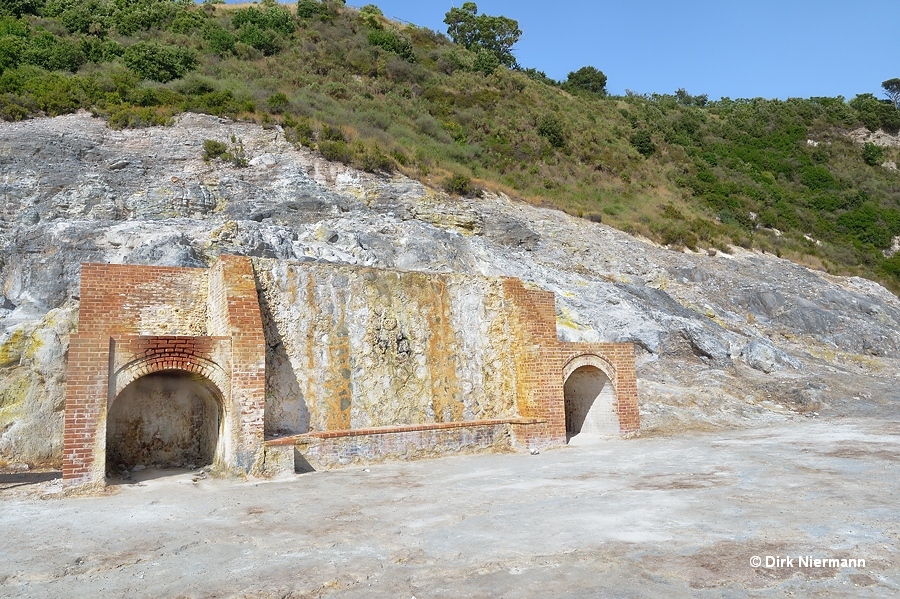Vulcano Solfatara
Solfatara, 2 km (1.2 miles) southeast of Pozzuoli’s town center, is currently the most active volcanic crater on - or better of - the Campi Flegrei. Already well known in the antique, the Romans called it Forum Vulcani, dedicated to Vulcan, the god of fire.
The roughly 750 m (2,460 feet) in diameter wide caldera, encircled by up to 40 m (130 feet) high tuff cone walls, is one of the smaller ones in this area and has been formed around 4000 years ago. A subsequent hydrothermal (steam-driven) eruption of Solfatara may have occurred in the year 1198.
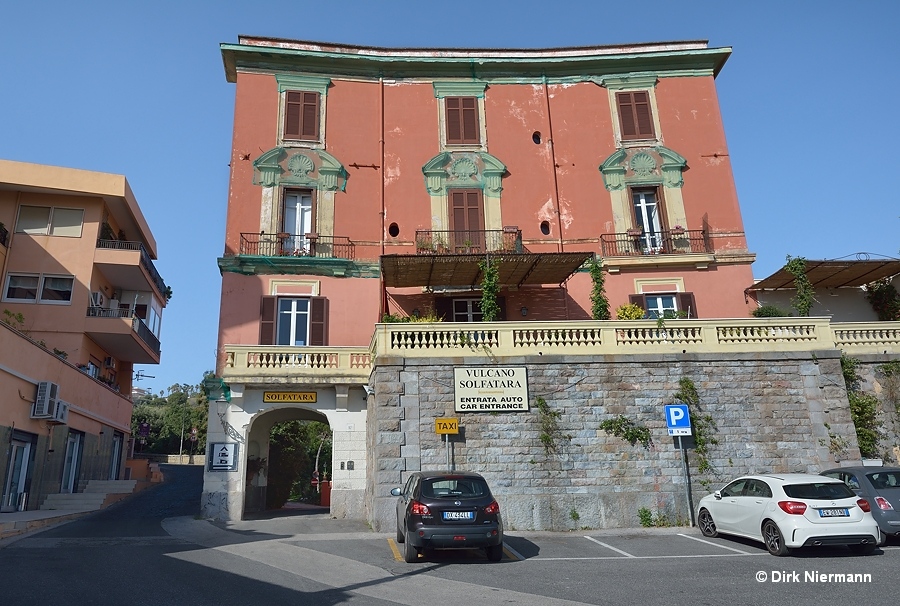
Among its geothermal features there are mainly fumaroles with sulfur deposits around the vent. Furthermore, also mofette (low temperature gas emissions), and a few murky, bubbling hot springs do occur. Fumaroles and springs are to be found not only inside the crater, but also on a small field called Pisciarelli on the eastern outer slope of the crater rim. In contrast to the interior area of Solfatara cone, where thermal activity is dominated by hot vapor up to 160 °C (320 °F), the temperatures at Pisciarelli are varying between 95 and 110 °C (203 - 230 °F) and the influence of liquid water is more prevailing.
Therefore, at Pisciarelli also noteworthy geysers may develop for a short period of time. For example, a geyser-type vent opened in November 2010. In January 2013 a newly emerged fumarole turned into a 5 m (16 feet) high spouting geyser due to heavy rainfall. Already earlier, in October 2006, the formation of a boiling pool with 3 m (10 feet) in diameter was detected, another one was originated in March 2009 by a steam explosion.
Less extreme temperatures of Pisciarelli's acidic hot springs also promote the proliferation of microcroorganisms, and in 1980 the two German microbiologists Karl Setter and Wolfram Zillig discovered the thermophilic archaeon Sulfolobus solfataricus (now regrouped as Saccharolobus solfataricus) in one of the springs. However, this area has been closed to the public since 2010, so all the pictures shown here were taken inside the crater.
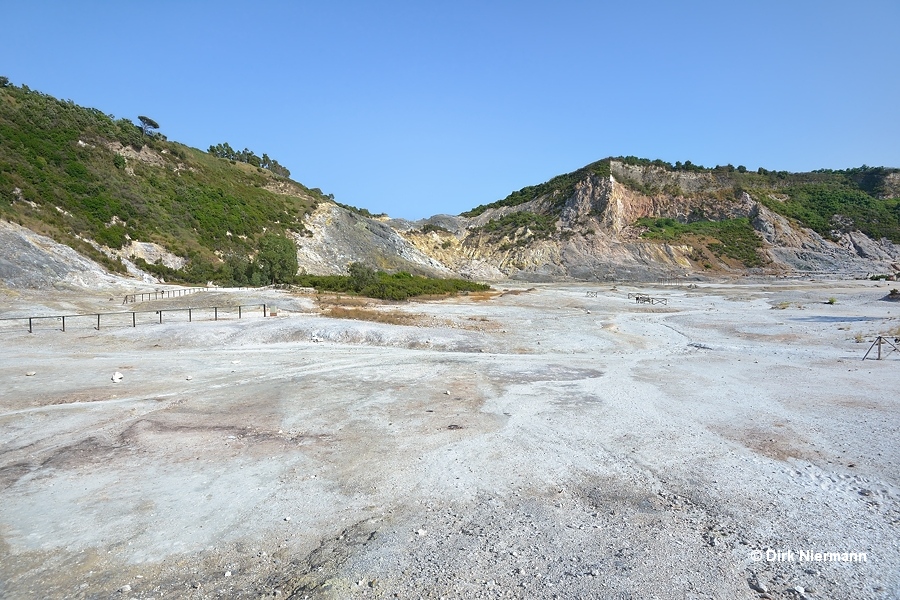
Thermal activity inside the Solfatara caldera is not equally distributed. It is quite low in the western section, where campsite and buildings are located, but rises more or less continually to the east. The first conspicuous feature you come across if you enter the caldera from the west is a slightly bubbling muddy pool. It is called La Fangaia (derived from fango, the Italian term for mud) and located almost in center of the crater. Inside the pool steam and gases from diffuse emission processes mix with rainwater and turn the clay into a constantly bubbling slurry, which stays well below boiling temperature.
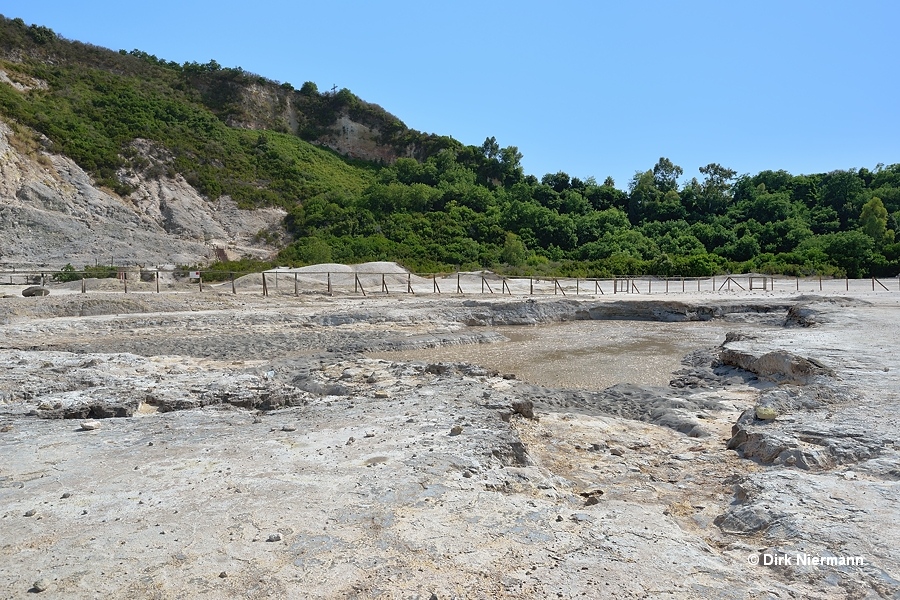
An exceptionally tragic accident at La Fangaia claimed the lives of three members of a family of four on September 12th, 2017. Newspapers reported that an 11-year-old boy, who visited Solfatara together with his family from Meolo in northern Italy, approached La Fangaia when suddenly a 1.5 m (5 feet) deep sink-hole opened up and swallowed him. It is still unclear, if this happened inside or outside the prohibited, fenced-off area. The boys' 45-year-old father tried to rescue him, but the collapsing rim of the hole pulled him down, too. The same happened to the mother of the boy when she rushed to the crater, and all three became unconscious by hot toxic gases and died eventually. For the shortly afterwards arriving rescue teams remained nothing but the recovery of the dead bodies. The only surviving member of the family was a seven-year-old boy, who stayed off the dangerous zone. After this incident Vulcano Solfatara has been closed to the public and still no date of reopening is known. (Update: Information has been released that the scene of the accident was just outside the fenced-off area. In the picture above the spot can be seen beyond the center of the active mud pool. In January 2021, the responsible person has been sentenced to six years of imprisonment and the Solfatara crater has been confiscated.)
La Fangaia is located at the edge of the most active, southeastern and northeastern area of the crater, where a system of fractures heats the ground and supplies energy for geothermal features. Fumarolic activity is mainly concentrated in its southeastern part, and the most conspicuous fumaroles are called Bocca Grande (Big Mouth) and Bocca Nuova (New Mouth).
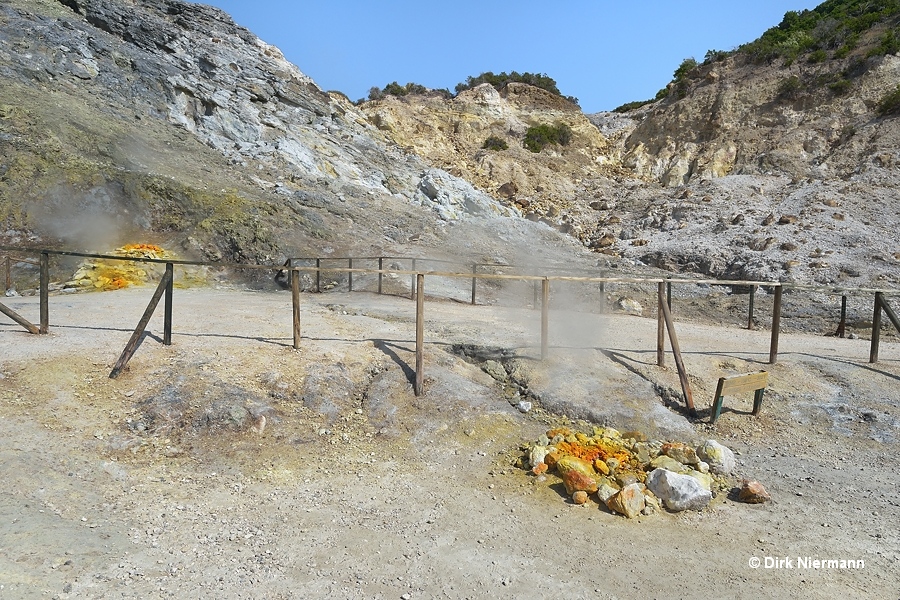
For Bocca Grande activity can be traced back more than 2000 years into the past when it represented the center of the Forum Vulcani. The emitted gases are up to 160 °C (320 °F) hot and rich in sulfur compounds. Besides the deposition of pure sulfur, chemical reactions and subsequent condensation processes are continuously coating the area around the vent with very colorful sulfide minerals, including the brilliant red to orange realgar (arsenic sulfide, AsS), the cochineal-red cinnabar (mercury sulfide, HgS), and the deep orange-yellow orpiment (arsenic sulfide, As2S3). However, the stunning micro crystals are quite toxic. Bocca Grande at Solfatara is the archetype of all fumaroles, and for this reason fumaroles emitting sulfurous gases and depositing sulfur minerals around their vent are also called solfataras.
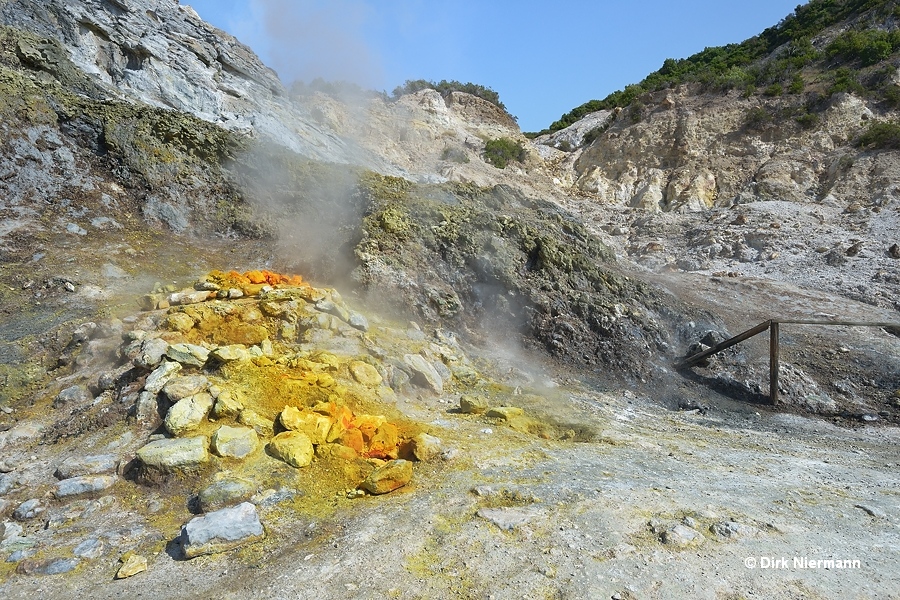
In 1984 the bradyseismic crises gave birth to the fumarole Bocca Nuova only 20 m (66 feet) west of Bocca Grande. Except for being smaller, it is similar to Bocca Grande in almost every aspect. Emission temperatures have been quite constant at 145 °C (293 °F) over the last decades.
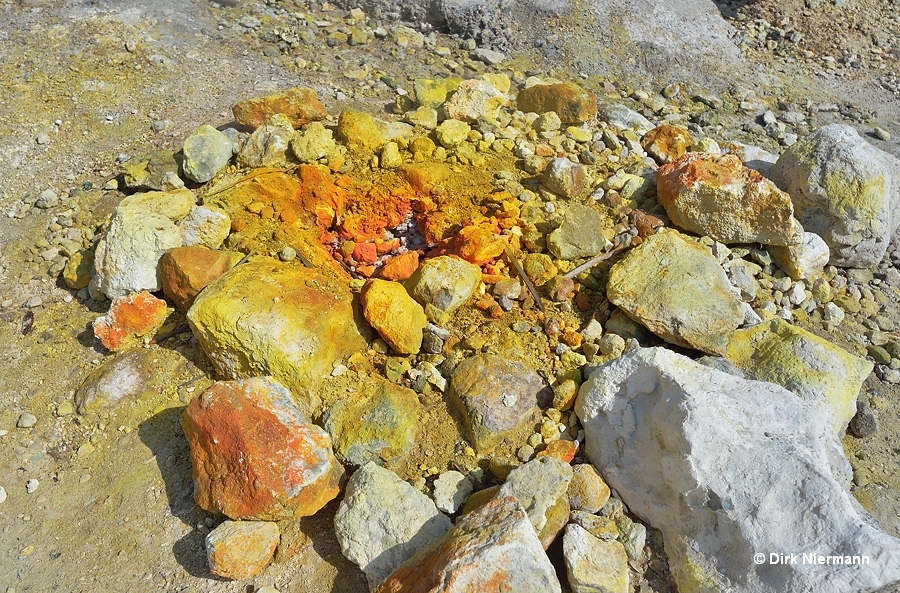
Smaller fumaroles are scattered from the southeast to the northeast all along the crater walls. Steam emissions and bright yellow sulfur deposits indicate their positions.
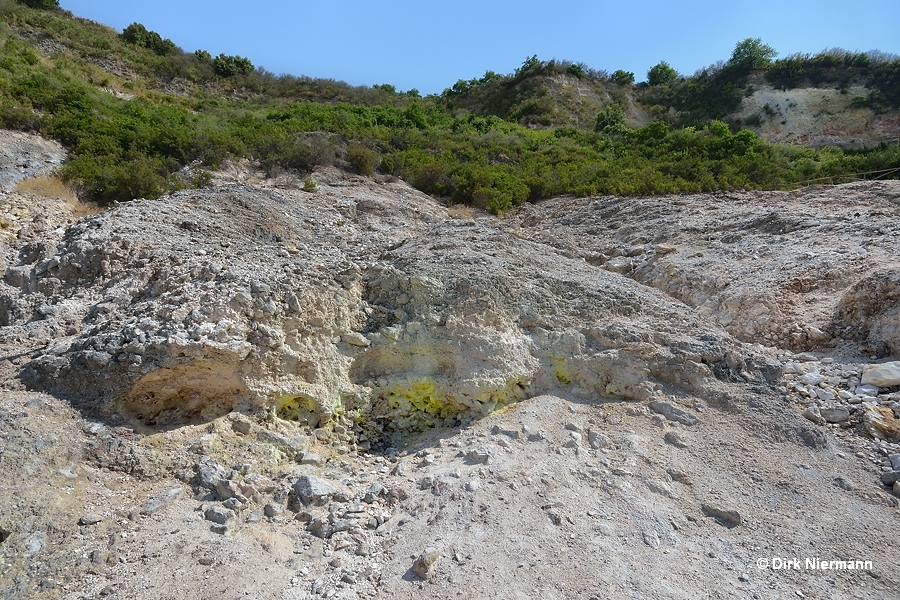
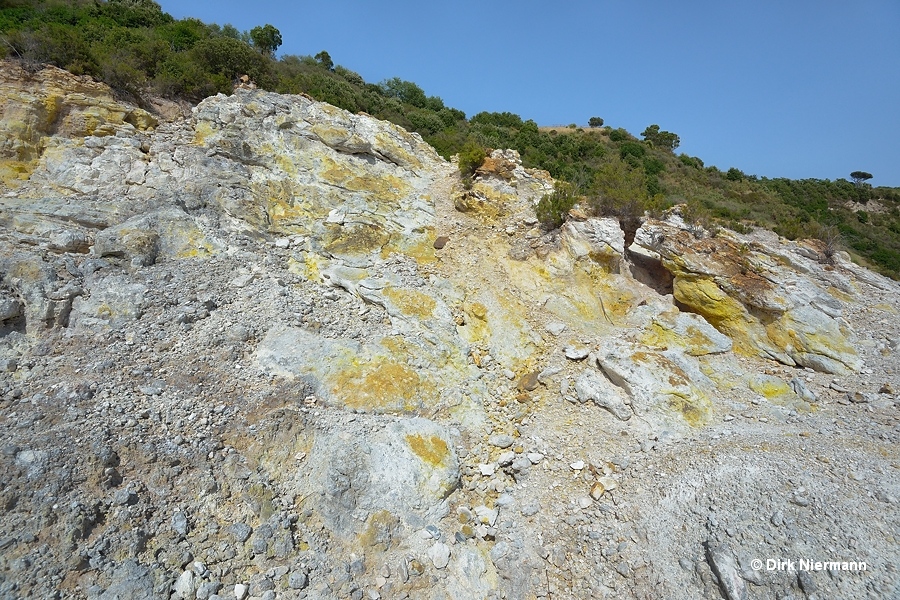
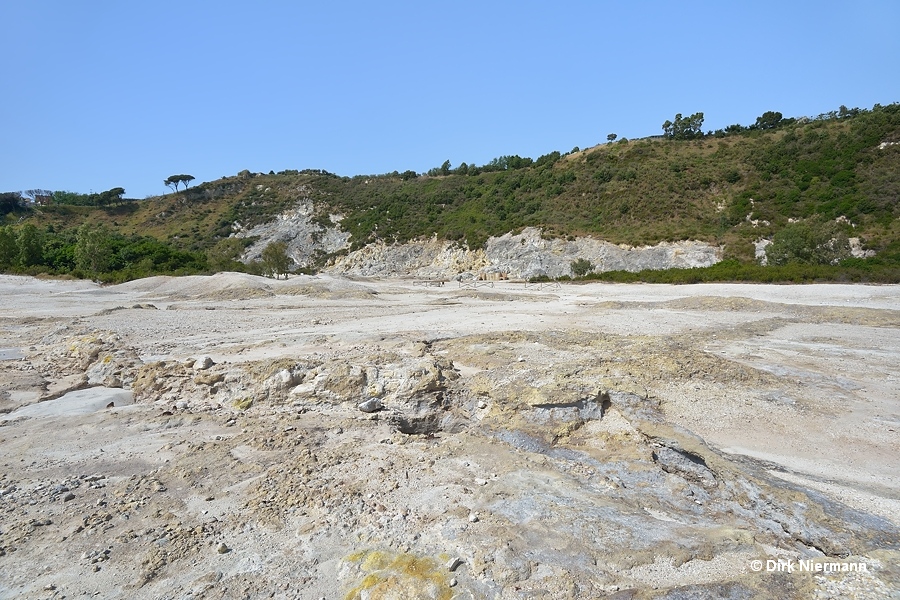
In front of the northeastern crater wall a "sauna" shows up, built at the end of the 18th century. It is called Stufe (derived from stufa, the Italian term for stove) and was used to inhale the intense sulfurous gases over a few minutes to cure respiratory diseases, skin diseases, and rheumatism.
